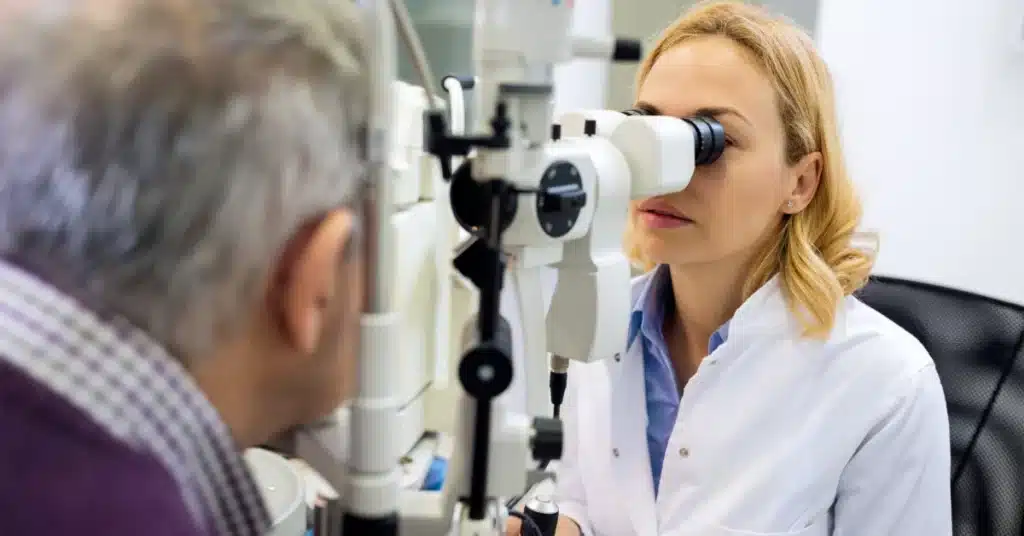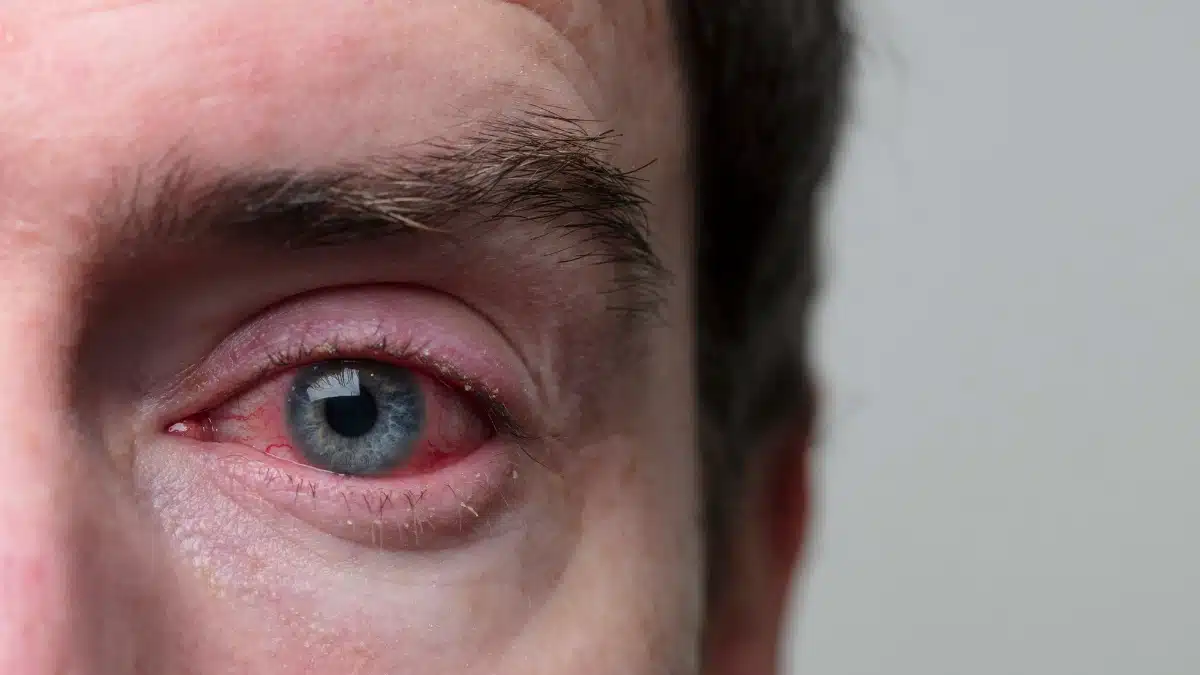The eye condition is a broad topic. There are several different eye conditions that affect your eyes.
Uveitis and Conjunctivitis are also a type of eye condition.
They both can affect your eyes in different ways.
Understanding the difference between Uveitis and Conjunctivitis is vital to diagnose them correctly.
In this comparison guide of Uveitis vs Conjunctivitis, we will compare the two eye conditions based on their causes, symptoms, and treatment.
So, let us proceed and compare these two eye conditions.
Uveitis vs Conjunctivitis: Key Differences
Although Conjunctivitis and Uveitis are types of eye conditions, they have several differences.
Conjunctivitis or pink eye is an eye infection causing inflammation in the conjunctiva, whereas Uveitis is an eye condition causing inflammation in the uvea.
The conjunctiva is a thin, clear membrane covering the sclera, the white part of the eye, and the inside of the eyelids.
The uvea is the eye’s middle layer, consisting of the iris, ciliary body, and choroid. It plays a crucial role in vision and eye health.
There are three types of pink eye, i.e., bacterial pink eye, viral pink eye, and allergic pink eye.
In the case of Uveitis, there are four types, Anterior Uveitis, Intermediate Uveitis, Posterior Uveitis, and Panuveitis.
Uveitis is a rare condition, whereas pink eye is a common eye condition affecting approximately 6 million individuals annually in the USA.
Uveitis takes approximately a month to get treated, and Conjunctivitis takes approximately 2 to 3 weeks to heal.
Since both eye conditions are treatable, seeking immediate medical assistance for both eye conditions, Uveitis and Conjunctivitis, is essential.
Eye specialists can help in recommending suitable treatments for the following eye conditions that are effective.
To explore more about the types of Uveitis, read Types of Uveitis: Understanding the Different Forms of Ocular Inflammation.
Pink Eye vs Uveitis: Differences in Their Symptoms
Both pink eye and Uveitis have different symptoms.
It is vital to look out for these symptoms to treat these two eye conditions effectively.
Let us move ahead and take a look at the common symptoms of Conjunctivitis and Uveitis.
| Common symptoms of Uveitis | Common symptoms of Conjunctivitis |
|---|---|
| Eye redness Eye pain Light sensitivity Blurred vision Floaters Decreased vision | Redness in one or both eyes Itchiness in one or both eyes A gritty feeling in one or both eyes A yellow discharge in one or both eyes Increased tearing Photophobia Swollen eyelids |
It is essential to note that the symptoms of these eye conditions might vary in individuals.
Therefore, seeking medical guidance from an authorized ophthalmologist for more information on symptoms of pink eye and Uveitis is advised.
To learn more about the symptoms of Uveitis, read 8 Uveitis Symptoms You Need to be Aware of.
Are There Any Differences in Their Causes
 Source: diplo_game
Source: diplo_gameYes, there are several differences in the causes of Uveitis and Conjunctivitis.
Although the exact cause of Uveitis is unknown, there are several factors that might cause inflammation and increase the risk of Uveitis.
Infections such as AIDS, Brucellosis, and Tuberculosis (TB) might increase the risk of Uveitis.
Similarly, autoimmune and inflammatory disorders such as Psoriasis, Crohn’s disease, Ulcerative Colitis, and Ankylosing Spondylitis might also increase the risk of Uveitis.
However, in the case of Conjunctivitis, there are several causes. Different types of Conjunctivitis have different causes.
Bacterial pink eye, as the name suggests, is caused by bacteria.
The common bacteria that cause pink eye are Staphylococcus Aureus, Streptococcus Pneumoniae, Haemophilus Influenzae, Chlamydia Trachomatis, and Neisseria Gonorrhoea.
In the case of viral pink eye, viruses such as Coronavirus, Herpes Simplex Virus (HSV), Adenovirus, and Enteroviruses are responsible.
And allergens like pollen, dust mites, pet dander, and mold might cause allergic Conjunctivitis.
According to research, these allergens may lead to inflammation in the conjunctiva, causing an individual to experience allergic pink eye.
To know about the causes of pink eye in more detail, read The Science Behind Pink Eye Causes: Viruses, Allergies, and More.
It would be best to visit a nearby eyecare center if you experience the symptoms of these two eye conditions for the diagnosis of their cause.
Do Both Have the Same Treatment Options
No, both eye conditions don’t have the same treatment options.
Although both are treatable eye conditions, their treatment option is different from each other.
The pink eye treatment depends on its cause.
In the case of viral pink eye, the symptoms usually get cleared up on their own.
However, sometimes doctors might suggest using antiviral drops to speed up the recovery and get relief from common viral pink eye symptoms.
But for bacteria and allergic pink eye, it is essential to use effective eye drops for their treatment.
Antibacterial eye drops might help to manage bacterial pink eye symptoms effectively.
To get relief from the common symptoms of allergic pink eye, such as itching and burning, antiallergic eye drops are proven effective.
Now, let us talk about the treatment of uveitis.
The treatment of Uveitis depends on its type.
To treat Anterior Uveitis, doctors might prescribe eye drops that reduce inflammation, widen the pupil, and lower the eye pressure.
In the case, of Intermediate Uveitis, Posterior Uveitis, and Panuveitis, an eye specialist might prescribe steroids to get relief.
Doctors might also prescribe antibacterial or antiviral medications for all types of Uveitis if they are caused by bacterial, fungal, or viral infection.
To select the best Uveitis medication, read Understanding Uveitis Medication Treatment
When to See an Ophthalmologist
 Source: LuckyBusiness
Source: LuckyBusinessIf you are experiencing eye discomfort or redness, it is important to know when to seek medical attention.
You should see an ophthalmologist promptly if you are experiencing common pink eye or Uveitis symptoms.
In the event that you experience green or yellow eye discharge, severe eye pain, light sensitivity, or blurred vision, you should seek medical advice right away.
The delay in treatment can result in complications and vision loss.
An authorized eye specialist will treat your eye conditions effectively after diagnosing their exact cause.
Comparative Analysis
We now know the complete difference between Uveitis and Conjunctivitis.
However, for an easy understanding, let’s take a look at the comparison table to summarise the difference between Uveitis and Conjunctivitis.
| Comparing factors | Uveitis | Conjunctivitis |
|---|---|---|
| Affecting area | The area affected by Uveitis is the uvea, the middle layer of the eye It causes inflammation in the uvea | The area affected by Conjunctivitis is the conjunctiva, the outer layer of the eye It causes inflammation in the conjunctiva |
| Prevalence | Uveitis is a rare eye condition | Conjunctivitis is a common eye condition |
| Symptoms | Symptoms of Uveitis include- Eye redness Light sensitivity Blurred vision Floaters | Symptoms of Conjunctivitis include- Redness in one or both eyes A yellow discharge in one or both eyes Increased tearing Swollen eyelids |
| Causes | The actual cause of Uveitis is unknown. There are several factors that may cause inflammation. Infections such as AIDS and autoimmune or inflammatory disorders such as Psoriasis might increase the risk of Uveitis by causing inflammation | There are several causes of pink eye. Bacteria, viruses, and allergens can cause Conjunctivitis. |
| Treatment | Uveitis is treatable. Eye drops, steroids, and antibacterial and antiviral medications might help to treat Uveitis | Conjunctivitis is also treatable. Antibiotic and antiallergic medicines might help to treat types of pink eye, bacterial pink eye, and allergic pink eye |
Key Notes
Uveitis and pink eye are two common eye conditions. However, they are different from each other.
Both of them vary in symptoms, causes, and treatment.
The common symptoms that indicate the presence of Conjunctivitis are photophobia, redness, and itching in the eyes.
Whereas in the case of Uveitis, eye pain, redness, sensitivity to light, and seeing floaters are common symptoms.
Similarly, they both also vary in causes.
Conjunctivitis can be caused due to bacteria, viruses, and allergens, whereas the cause of Uveitis is unknown.
But the important thing to note is both eye conditions are treatable. Therefore, it is important to seek medical expertise for their management.
In the case of pink eye, doctors may prescribe antibacterial eye drops for bacterial Conjunctivitis and Antiallergic for allergic Conjunctivitis.
Whereas for Uveitis, doctors might prescribe antibacterial and antiviral medications, steroids, and eyedrops to reduce inflammation.
Frequently Asked Questions
Can a 15-year-old person experience Uveitis?
Yes, a 15-year-old person can experience Uveitis. This eye condition can occur in individuals of all age groups. It would be best to connect with your eye care provider to treat your Uveitis promptly.
Is Conjunctivitis more severe than Uveitis?
No, Conjunctivitis is not more severe than Uveitis. Since Uveitis causes inflammation inside the eye, it is considered a more serious eye condition in comparison to Conjunctivitis.
Uveitis requires immediate treatment to avoid vision-threatening complications. Therefore, contact a medical practitioner for its treatment.
Can Uveitis be contagious like Conjunctivitis?
No, Uveitis is not contagious like Conjunctivitis. Unlike the pink eye, Uveitis does not spread between individuals.
Can Conjunctivitis resolve on its own without treatment?
Yes, viral pink eye, a type of Conjunctivitis, can be treated without any medication. However, the other types of Conjunctivitis, bacterial eye pink and allergic pink eye, do require medical intervention for effective treatment and speedy recovery.
Is Uveitis the same as pink eye?
No, Uveitis is not the same as pink eye. Although Uveitis and pink eye are a type of eye condition, they have distinct causes, symptoms, and treatments. Uveitis is the inflammation of the uvea, whereas pink eye is the inflammation of the conjunctiva.
Cheap Medicine Shop only refers to credible, authoritative sources for our content. If you’re curious about how we ensure the integrity of our content, we encourage you to read our Content Information Policy.


